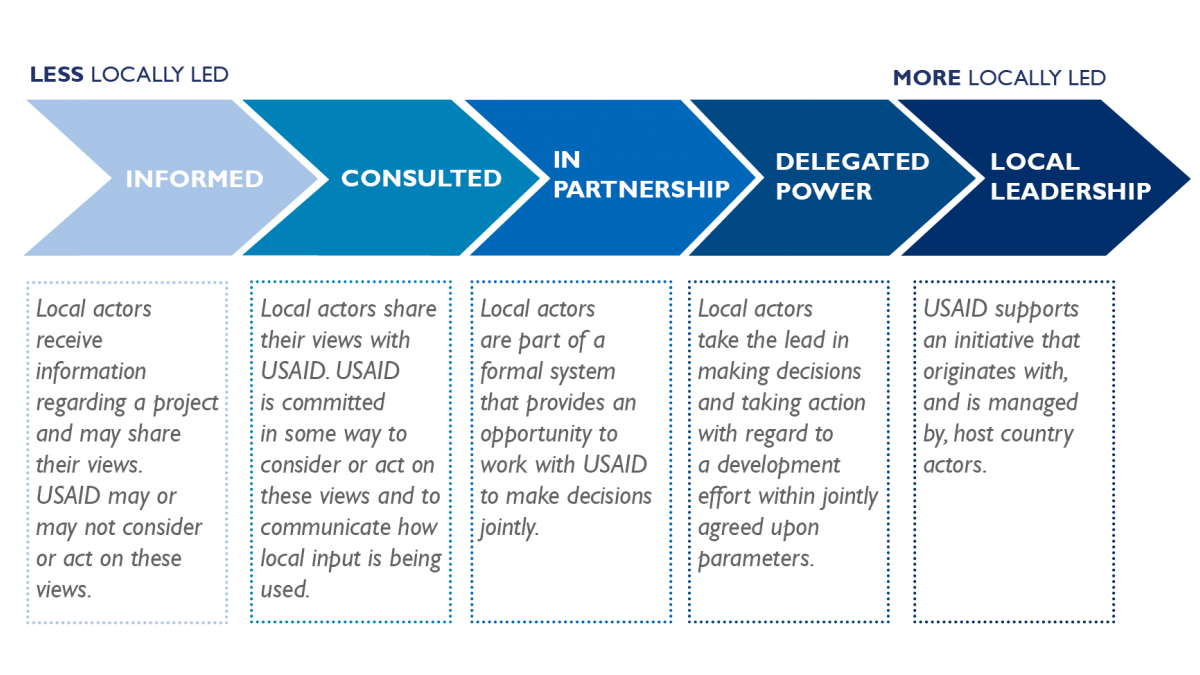What is Locally Led Development?
Locally led development is the process in which local actors – encompassing individuals, communities, networks, organizations, private entities, and governments – set their own agendas, develop solutions, and bring the capacity, leadership, and resources to make those solutions a reality.

Programs and Opportunities
USAID’s Locally Led Development Initiatives team (LLDI) offers a range of uniquely flexible programs, opportunities, tools, and research that support local ownership and leadership throughout the development process. The work that LLDI supports helps to advance USAID’s localization efforts.
Unsolicited Solutions for Locally Led Development (US4LLD)
Supporting locally-driven ideas from around the world
Locally Led Development Annual Program Statement
Enabling USAID Missions to solicit, co-create, and fund innovative approaches to locally led development
Locally Led Development Research
Generating evidence and learning to drive a more effective approach to locally led development
USAID-Peace Corps Partnerships
Catalyzing locally led development to address community priorities through interagency collaboration
Key Resources
Localization: Learn more about USAID’s localization efforts.
Local Capacity Strengthening Policy: A first-of-its-kind Policy establishing Agency-wide principles centered around the priorities, know-how, and existing capacities of local organizations.
Locally Led Development Initiatives Fact Sheet: Learn more about how LLDI is enhancing and advancing USAID’s ability to support local leadership and ownership throughout the development process through uniquely flexible programs, opportunities, and resources.
Locally Led Development Spectrum and Checklist Tool: Locally led development is not a single approach, but a range of ways to shift agenda-setting and decision-making power into the hands of local actors. USAID considers this as a spectrum of locally led development approaches.
Participatory Evaluation Guidance Note: Local stakeholders take the lead in all aspects of locally led development processes. This note offers practical guidance and examples to help USAID and its evaluation partners design and carry out evaluations in more participatory, locally led ways.
Local Resource Mobilization: A Case Study from USAID/Serbia Local Works: This case study investigates how partners in USAID/Serbia's Local Works Program have mobilized local resources - including money, but also people, their skills and knowledge, physical space, and other assets - in support of development outcomes. Findings around community and government engagement efforts demonstrate the importance of building relationships and networks, sharing knowledge, and clearly communicating possible solutions and the path to change.
Where We Work
- Explore the map to learn more about LLDI programming around the world.
- Click here for an accessible PDF version of the map.
